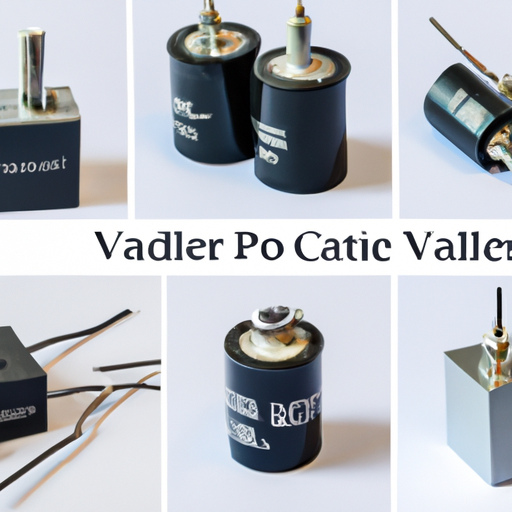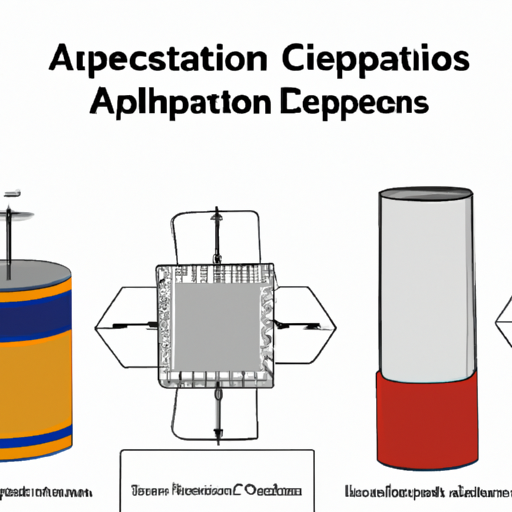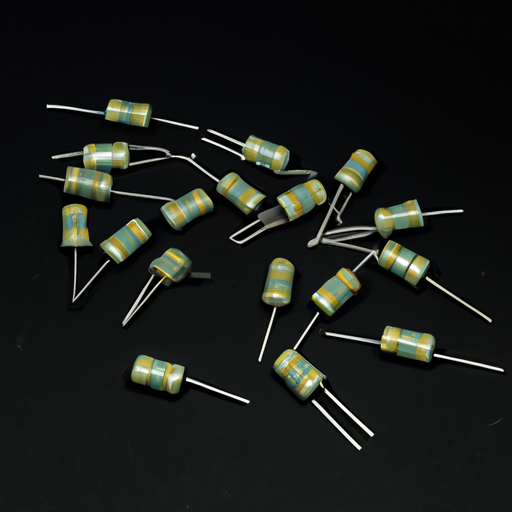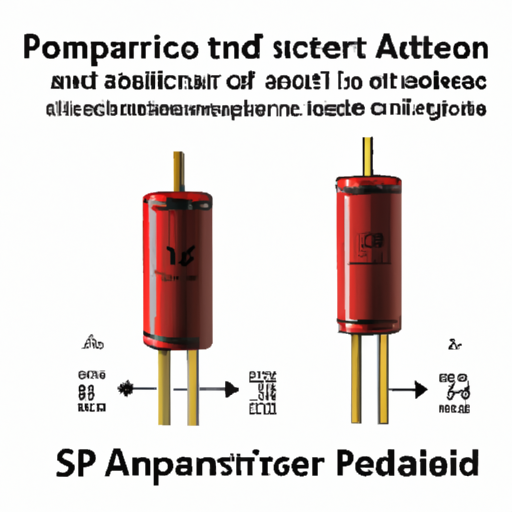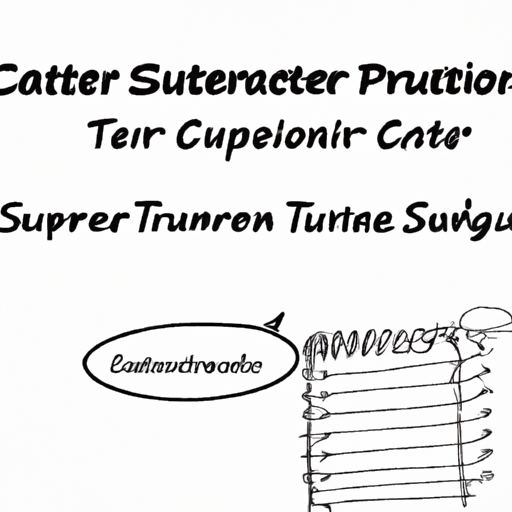What components and modules are included in high-voltage parallel capacitors?
What Components and Modules are Included in High-Voltage Parallel Capacitors?
I. Introduction
High-voltage parallel capacitors are essential components in modern electrical systems, playing a critical role in power management, energy storage, and voltage stabilization. These capacitors are designed to operate at voltages significantly higher than standard capacitors, making them indispensable in various applications, including power generation, transmission, and distribution. This article aims to explore the components and modules that constitute high-voltage parallel capacitors, their functionality, advantages, and the challenges associated with their use.
II. Basic Principles of Capacitors
A. Explanation of Capacitance
Capacitance is the ability of a capacitor to store electrical energy in an electric field. It is defined as the ratio of the electric charge stored on one plate of the capacitor to the voltage across the plates. The unit of capacitance is the farad (F), with practical applications often using microfarads (µF) or picofarads (pF).
B. Functionality of Capacitors in Electrical Circuits
Capacitors serve various functions in electrical circuits, including energy storage, filtering, and voltage regulation. They can smooth out voltage fluctuations, provide power during brief interruptions, and improve the overall efficiency of electrical systems.
C. Types of Capacitors and Their Applications
Capacitors come in various types, including ceramic, electrolytic, tantalum, and film capacitors, each suited for specific applications. For instance, ceramic capacitors are often used in high-frequency applications, while electrolytic capacitors are preferred for power supply filtering due to their high capacitance values.
III. High-Voltage Capacitors
A. Definition and Characteristics of High-Voltage Capacitors
High-voltage capacitors are designed to operate at voltages exceeding 1,000 volts. They are characterized by their robust construction, specialized materials, and enhanced safety features to handle the stresses associated with high-voltage applications.
B. Applications in Power Systems, Energy Storage, and Electronics
These capacitors are widely used in power systems for reactive power compensation, voltage regulation, and energy storage. They are also employed in electronic devices, such as power supplies and inverters, to ensure stable operation.
C. Importance of Parallel Configurations in High-Voltage Applications
Parallel configurations of high-voltage capacitors are crucial for increasing total capacitance while maintaining voltage ratings. This arrangement allows for better distribution of electrical stress and enhances reliability in high-voltage applications.
IV. Components of High-Voltage Parallel Capacitors
A. Dielectric Materials
1. Types of Dielectrics Used (Ceramic, Film, Electrolytic)
The dielectric material is a critical component of capacitors, influencing their performance and voltage handling capabilities. Common dielectrics used in high-voltage capacitors include ceramic, film, and electrolytic materials. Ceramic dielectrics are known for their stability and high dielectric strength, while film dielectrics offer excellent insulation properties and low losses. Electrolytic capacitors, on the other hand, provide high capacitance values but are limited to specific applications due to their polarity.
2. Role of Dielectrics in Voltage Handling and Capacitance
The dielectric material determines the maximum voltage a capacitor can handle and its capacitance value. A higher dielectric constant allows for greater capacitance in a smaller volume, making it essential for compact designs in high-voltage applications.
B. Conductive Plates
1. Materials Used (Aluminum, Copper, etc.)
Conductive plates are essential for storing electrical energy. High-voltage capacitors typically use materials like aluminum and copper due to their excellent conductivity and corrosion resistance. The choice of material affects the capacitor's efficiency and thermal performance.
2. Design Considerations for Conductive Plates
The design of conductive plates must consider factors such as surface area, thickness, and spacing to optimize capacitance and minimize losses. Additionally, the plates must be designed to withstand high voltages without risk of breakdown.
C. Terminals and Connectors
1. Types of Terminals (Screw, Solder, etc.)
Terminals and connectors are vital for establishing reliable electrical connections in high-voltage capacitors. Common types include screw terminals, solder terminals, and bolt connections, each offering different advantages in terms of ease of installation and reliability.
2. Importance of Reliable Connections in High-Voltage Applications
In high-voltage applications, reliable connections are crucial to prevent arcing and ensure safety. Poor connections can lead to increased resistance, heat generation, and potential failure of the capacitor.
D. Housing and Insulation
1. Materials Used for Housing (Plastic, Metal)
The housing of high-voltage capacitors is designed to protect internal components from environmental factors and mechanical stress. Common materials include plastic and metal, with metal housings providing additional shielding against electromagnetic interference.
2. Insulation Techniques to Prevent Arcing and Leakage
Insulation is critical in high-voltage capacitors to prevent arcing and leakage currents. Techniques such as using high-quality insulating materials and ensuring proper spacing between conductive components are essential for maintaining safety and performance.
E. Safety Features
1. Fuses and Circuit Breakers
Safety features such as fuses and circuit breakers are integrated into high-voltage capacitors to protect against overcurrent conditions. These devices help prevent catastrophic failures and ensure safe operation.
2. Pressure Relief Mechanisms
High-voltage capacitors may experience internal pressure buildup due to dielectric breakdown or other failures. Pressure relief mechanisms are designed to safely vent gases and prevent explosions, enhancing the overall safety of the system.
V. Modules in High-Voltage Parallel Capacitors
A. Capacitor Banks
1. Definition and Purpose of Capacitor Banks
Capacitor banks are assemblies of multiple capacitors connected in parallel or series to achieve desired capacitance and voltage ratings. They are used to improve power factor, stabilize voltage, and provide reactive power support in electrical systems.
2. Configuration and Arrangement of Capacitors in Banks
The configuration of capacitor banks can vary based on application requirements. Parallel arrangements increase total capacitance, while series configurations can be used to achieve higher voltage ratings.
B. Control Modules
1. Role of Control Systems in Managing Capacitor Banks
Control modules are essential for managing the operation of capacitor banks. They monitor voltage levels, power factor, and other parameters to ensure optimal performance and efficiency.
2. Monitoring and Diagnostic Features
Modern control modules often include advanced monitoring and diagnostic features, allowing for real-time data collection and analysis. This capability helps in predictive maintenance and enhances the reliability of the system.
C. Protection Modules
1. Surge Protection Devices
Surge protection devices are critical in high-voltage applications to protect capacitors from voltage spikes caused by lightning strikes or switching operations. These devices help prevent damage and extend the lifespan of capacitors.
2. Overvoltage and Undervoltage Protection Systems
Overvoltage and undervoltage protection systems are designed to disconnect capacitors from the circuit during abnormal voltage conditions, ensuring safety and preventing damage to the capacitors and associated equipment.
VI. Advantages of High-Voltage Parallel Capacitors
A. Improved Power Factor
High-voltage parallel capacitors help improve the power factor of electrical systems by providing reactive power support, reducing losses, and enhancing overall efficiency.
B. Enhanced Voltage Stability
By stabilizing voltage levels, high-voltage capacitors contribute to the reliable operation of electrical systems, minimizing the risk of voltage sags and surges.
C. Increased Energy Efficiency
The use of high-voltage capacitors can lead to significant energy savings by reducing the need for additional generation capacity and improving the efficiency of power transmission.
D. Reduced Harmonic Distortion
High-voltage capacitors can help mitigate harmonic distortion in electrical systems, improving the quality of power and reducing the risk of equipment damage.
VII. Challenges and Considerations
A. Design Challenges in High-Voltage Applications
Designing high-voltage capacitors involves addressing challenges such as material selection, thermal management, and ensuring reliability under extreme conditions.
B. Maintenance and Reliability Issues
Regular maintenance is essential to ensure the reliability of high-voltage capacitors. Aging, environmental factors, and operational stresses can lead to performance degradation over time.
C. Environmental Considerations and Regulations
High-voltage capacitors must comply with environmental regulations regarding materials and disposal. Manufacturers are increasingly focusing on sustainable practices to minimize environmental impact.
VIII. Conclusion
High-voltage parallel capacitors are vital components in modern electrical systems, providing essential functions such as energy storage, voltage stabilization, and power factor correction. Understanding their components and modules is crucial for engineers and technicians working in the field. As technology advances, the future of capacitor design will likely focus on improving efficiency, reliability, and environmental sustainability, ensuring that high-voltage capacitors continue to play a significant role in the evolution of electrical systems.
IX. References
A comprehensive list of academic papers, articles, and resources for further reading on high-voltage capacitors and their applications can be provided upon request.

